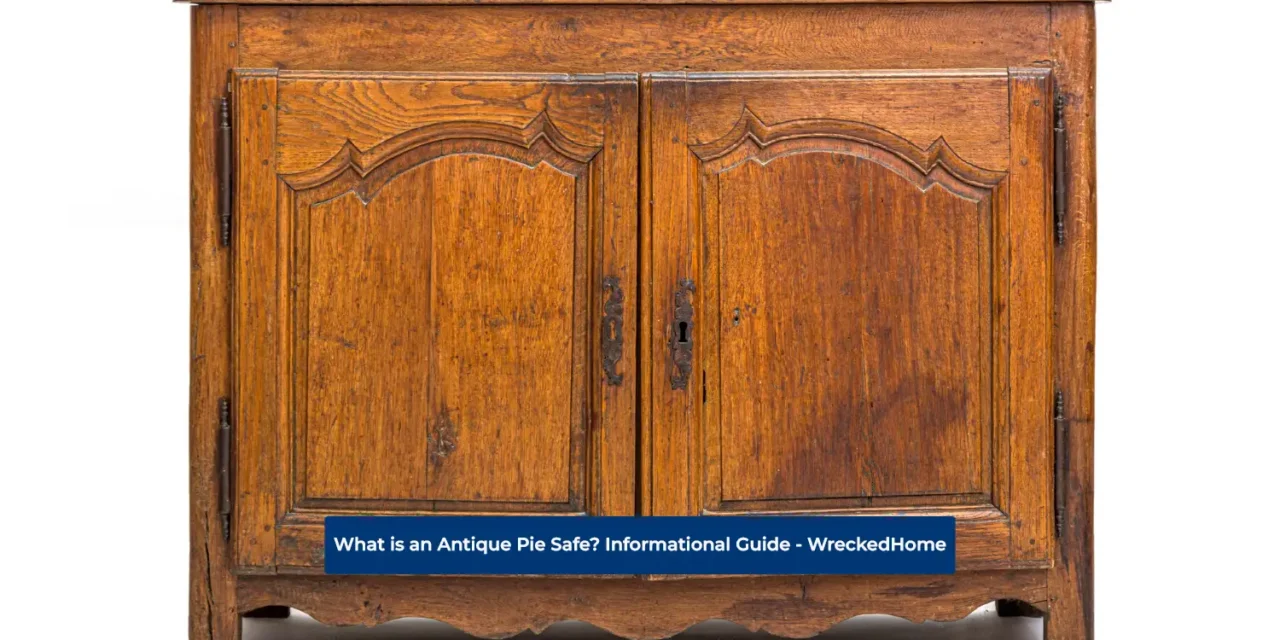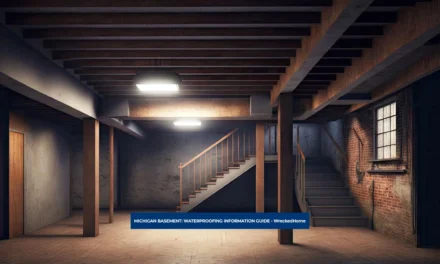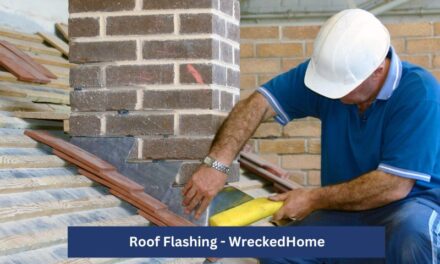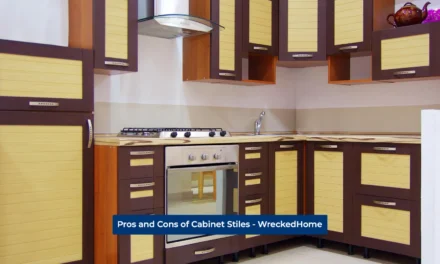I have seen a lot of people who are curious about antique pie safes. These were common in kitchens of the 1800s or 1900s. Today, interior designers are making them part of modern furniture.
So, I decided to share an informational guide about antique pie safe with you. This guide will help you in buying this safe. So, let’s see what this antique piece is.
What is an Antique Pie Safe?
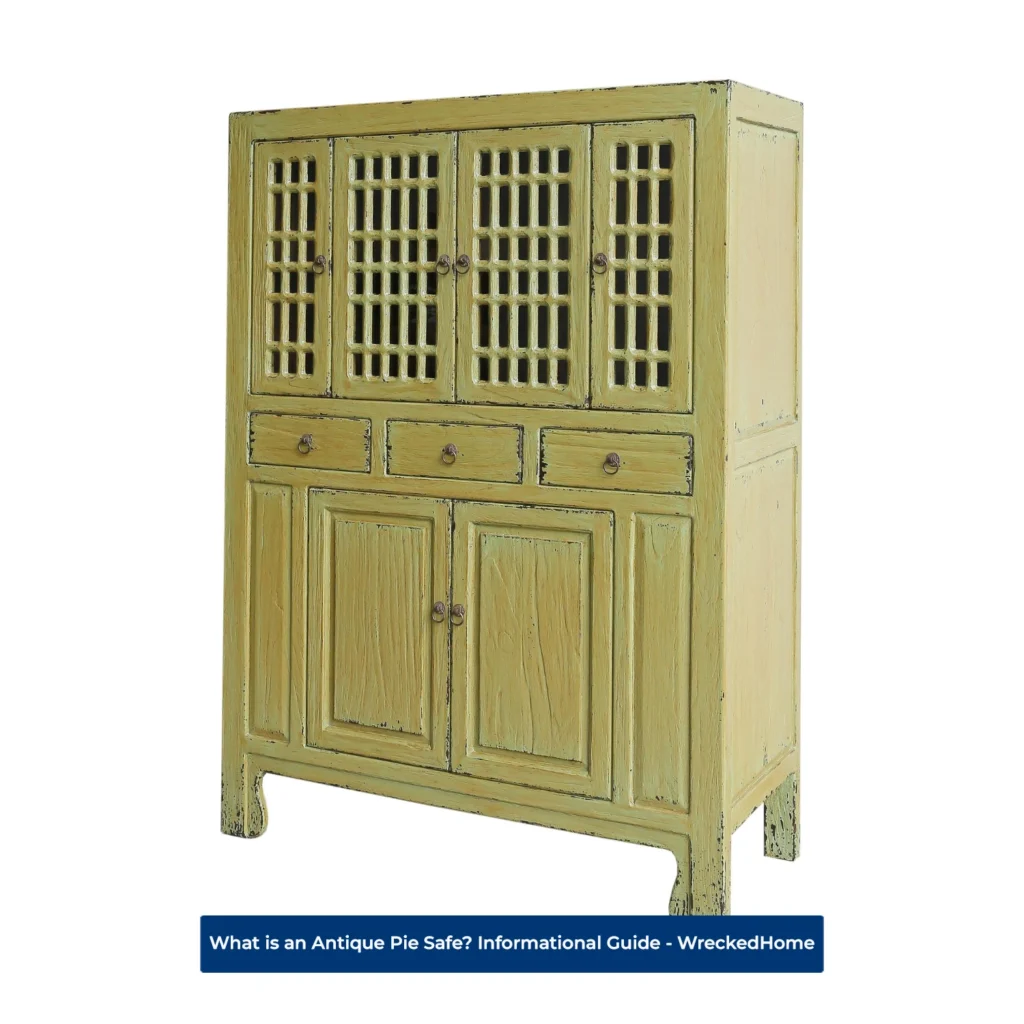
In the past, there were no refrigerators to store sweets and bakery items. People found it difficult to protect their sweet products from bugs or other insects. In this scenario, an antique pie safe was a lifesaver for them.
It is a standalone cabinet that has two doors and a few shelves. You may know that in the early kitchens, there were no in-wall cabinets. So, people needed a standalone cabinet to store their food. That’s why these pie safes were a popular option in the 1800s.
It was developed by immigrant Dutch in the early 1700s. A few Pennsylvanian Dutches immigrated to the US in that era. They developed this standalone cabinet which was the heart of old American kitchens. Almost every other kitchen had this cabinet.
People used it for food preservation. Also, this safe helped keep the food away from children, insects, and bacteria.
This is the general introduction and history of this ancient pie safe. Now, you may want to know how this safe worked in place of a refrigerator. How did it keep the products fresh? So, I am going to discuss it now.
Does an Antique Pie Safe Have Ventilation?
Amazingly, a simple safe was able to ventilate bakery goods. It is awe-striking that food remains fresh even when refrigerators were not in the world. So, how does it happen with this safe?
Well, it has different holes in it. This safe contains perforated panels that are present on the top, front, or sides. These panels are mostly made of tin or copper.
The holes let the hot air escape slowly from the safe. So, the baked goods could cool off and remain fresh. These holes were present in decorative form on the panels. So, you can see stars, flowers, hearts, and other symbols on your pie safe.
In this way, this antique cabinet has food ventilation. It kept doing this work until the early 1900s. Then, the icebox was introduced in the market, and it changed the whole history of food preservation. After the icebox, the antique safe became outdated. Home owners swiftly switched to the Icebox because it was more reliable.
Today, different collectors and interior designers are interested in this antique piece. They want to make it a part of their collection. Or, the interior designers are re-introducing them. So, you can use this safe in the kitchen or dining room.
You should know the different aspects of the pie safe before buying it! So, I am going to discuss them now.
Different Aspects of Antique Pie Safe
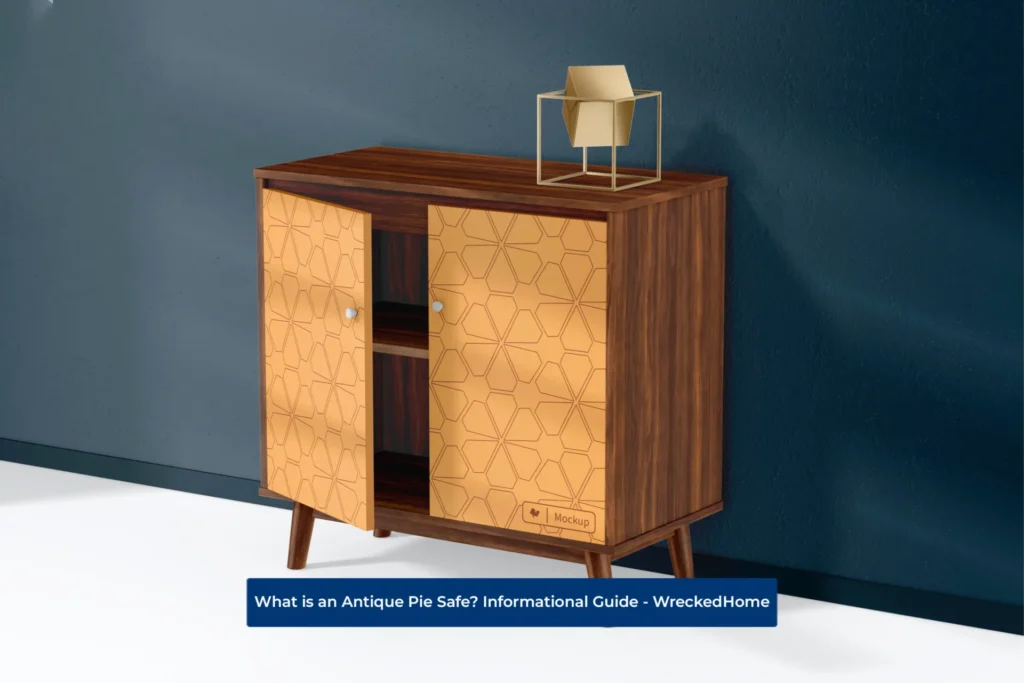
I am going to discuss different styles of this safe. During the 1800s to 1900s, it went through different revolutionary factors. So, you can find this safe in different sizes, styles, and materials.
Size
Size is the easiest aspect to learn. You can take one glance at the pie safe and know about its size. There are two common sizes of this safe.
- Three-shelf Safe: This pie safe has three upper shelves. So, it looks similar to the bureau in size. These shelves are protected by perforated double doors. So, they will let the air in and bug away. This size is the traditional one of this safe.
- Half-sized Safe: These are small-sized safes that are best for small households. Originally, they were the size of a chest of drawers. In it, the shelves are present at the bottom part. So, there is no storage space in it. This means you will get limited space for storing bakery goods.
These are the two common sizes from which you have to choose.
Colors
The pie safe also varies in terms of color. These were in natural wood color in the 17th and 18th centuries. The designers don’t like to paint them.
But in the 19th century, there came a change. The designers started painting the safe in different hues. The common colors were yellow, light blue, purple, and green.
Wood
There was no concept of imported wood in the 1800s. So, the pie safe was made of local wood. It means you can find the safe in different wood materials. The common wood types were soft pine, yellow fir, and Spanish wood cedar.
Soft pine wood was the local wood of Pennsylvania and England. So, the safe of these areas used this wood material.
Similarly, Yellow fir was common in Carolina and Virginia. And, Spanish wood cedar was used in Texas.
Doors
The major part of the safe was made of wood. But, the doors were made of different materials. They were either made of tin, glass, or cane.
Designers mostly prefer tin in making the doors. They punch the holes in it easily. Furthermore, the tin door lasts longer and is inexpensive.
On the other hand, glass and cane doors were less common. They were expensive so people didn’t prefer them.
Construction
The construction was also different for each safe. They were made in two different forms. One was a hutch-inspired form, and the other one was a display cabinet.
In the hutch construction, there is a hutch in the upper part and the shelves in the lower one. The hutch acted as an additional shelf. So, it is an ideal space for displaying and storing kitchenware.
The display cabinet was a simple one. It was a plain cabinet that stood tall and thin. So, it didn’t take up much space.
These are the five main elements that make antique pies safe, unique, and stylish. But, what is the age of your safe? Let’s discuss this answer now.
The Age of My Antique Pie Safe
Various aspects will tell you the age of a pie safe. This knowledge will help you in determining the value of your antique piece.
Square Head Nails
The primary era of this safe is the early 1800s or late 1800s. You can determine the era with the help of square head nails.
If a pie safe has square head nails, it means it was manufactured from the late 1700s to 1830. It is the oldest antique piece.
But, if this safe doesn’t have these nails, it will be from the late 1800s era. These safes may have headless machine-cut nails which were common in the 1890s.
Paint
The color of a pie safe can also tell you the age of it. I have told you that there was natural finishing in the early 1800s. Only in the late 1800s and early 1900s, paint was introduced. Your paint can peel off from various places because of its age.
Finishing
You need to inspect the finishing too. The visible saw marks on your pie safe indicate that this piece is from the early 1800s. The circular saw was common before the 1830s.
But, it can also happen that your pie safe has gone through repairs. There can be modern finishing elements on it. If this is the case, you should inspect the antique piece for any signs of wear and tear.
Aging Wood
The insides of the antique safe never went through any sort of finishing. They were never varnished or painted. So, you can check the aging wood of shelves. This will help you indicate the age of the pie safe.
Now, I am going to discuss what type of pie safe is more costly.
The Worth of an Antique Pie Safe
- You can determine the worth of any antique piece through its age. It will be worth it if it is from the 1800s. People don’t give much importance to the antique pieces of the 1900s so their value is less.
- The antique piece shouldn’t have any modern aspects on it. If they are repaired, their worth will be less. So, you should prefer those antique pieces which have original paint and hardware. Also, you shouldn’t re-paint your antique piece if you want to re-sell it for auction.
- The wood material also helps in determining the cost. If your antique piece is made of simple grown wood, it will be of less price. A safe made of pine or chestnut will have a huge price.
- The tin punch doors also increase the value of your antique piece. So, you should prefer those that have intricate designs. But, if the door is solid or plain, its cost will be less.
If you need to restore you antique piece, please reach out to a professional. Find A Pro Near You Here!
Frequently Asked Questions
What is the Antique Pie Safe Worth?
Their worth depends on their age and material. The antique pieces of the 1800s can be worth a few thousand dollars. On the other hand, the antique pieces of the 1900s are less worthy. They can be less than 1000 dollars.
What was the Use of the Drawer on the Pie Safe?
It was used to store different objects. These included napkins, silverware, and plates.
Where could you use the Pie Safe?
You can use your pine safe in different places. You can put it in the kitchen as a cabinet. It can be in the dining room to store candles and tableware. You can store toiletries in it. Or, you can put it in the playroom to store toys.

